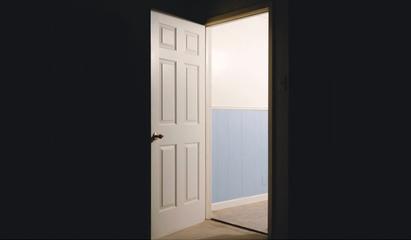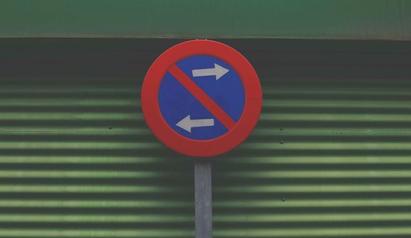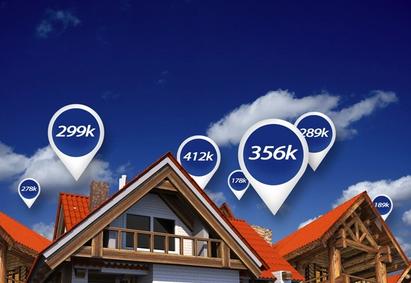A Guide to Buying Your First Home
Written by:
Ashley Altus
Ashley Altus
Certified Financial Counselor
Ashley Altus is a writer and certified financial counselor through the National Association of Certified Credit Counselors.
See full bio
Fact Checked by:
Patrick Boyaggi
Patrick Boyaggi
CEO an Co-Founder
Patrick is the Co-Founder and CEO of Own Up. He has a wealth of experience and knowledge as a mortgage executive.
See full bio

Fast Links
- Who are first-time home buyers?
- How You Know You’re Ready to Start Looking for a Home
- How Much Mortgage Do You Qualify for?
- How Much House Can You Afford?
- The Perks of Buying Your First Home
- How long will it take to buy your first home?
- Steps in the Home Buying Process
- You Can Make It to the Homeowner Finish Line
From renter to buyer, we have the steps, tips, and details you need to make the process simple.
Looking at houses on your favorite real estate marketplace app and dreaming about home ownership can be amusing, but there’s so much more to the home buying than finding a house you love.
Understanding the home buying process can help you make the right decisions to achieve your goals and meet your needs.
Use this guide to unpack what you need to know about buying your first home.
Who are first-time home buyers?
As a first-time home buyer, you’re definitely not alone. First-time home buyers make up about a third of all home buyers, with the majority of buyers between the ages of 23 to 41, according to the 2022 NAR Home Buyers and Sellers Generational Trends Report.
How You Know You’re Ready to Start Looking for a Home
Because buying a home can be a life-changing decision, it’s important to prepare for everything that comes with homeownership ahead of time. Before you’re too far down the road, check to see if this is truly the right time to embark on this path.
Check Your Financial Health
Conducting a review of your finances can help align your expectations and if you can afford a home.
See where you stand by looking at the following:
Credit History
Lenders check a borrower’s credit history to evaluate their risk. You can obtain free copies of your credit report at AnnualCreditReport.com. If you find your credit isn’t exactly where it needs to be to qualify for a mortgage, the good news is that you can improve your score. In general, the higher your credit score, the easier it’ll be to obtain a home loan.
Income
From home buying to home ownership, you’ll need a steady income to budget for all the expenses that come with a home. Lenders will evaluate and verify all of your income streams when making lending decisions.
Debt
Lenders are very interested in how you’ve handled your debts and the amount of debt you have. They’ll look at everything from student loans to credit card debt. In general, the less debt you have when applying for a mortgage, the more favorable you’ll appear to lenders.
Savings
When people talk about saving up for a house, they’re typically referring to setting money aside for a down payment. The amount you need will depend on the mortgage type. For first-time home buyers, the average down payment was 6% of the total price of the home, according to Freddie Mac.
Saving for a down payment is just the start of the savings you’ll need for a new home. It’s also important to have an emergency fund of three to six months’ worth of expenses and money for other home-buying related costs, such as closing costs, moving expenses, and housing inspections.
Your future plans
Even if your finances are in good shape, you’ll want to consider your long-term needs and goals before going all-in on the home buying process. While there isn’t a hard and fast rule about how long you should stay in a home, because the process can be long and expensive, you’ll want to stay in the home long enough to make it worth it.
The average American can expect to spend about 13 years in their home, according to a 2022 data report from Redfin. It may not be worth going through the home buying process if you plan to relocate in a couple of years.
How Much Mortgage Do You Qualify for?
Speak with a mortgage lender to get a better understanding of how much of a loan you’re likely to qualify for. Just because you think you can qualify for a home in a specific price range, doesn’t mean a lender will agree with your assessment. Lenders look at the borrower's complete financial picture when determining the mortgage amount they’re willing to lend.
In contrast, you may qualify for a loan much bigger than you anticipated, but just because a lender is willing to lend you more, doesn’t mean you have to borrow that amount.
How Much House Can You Afford?
It’s no secret that a home is a large financial commitment. A lender’s estimate of how much you can afford will come from examining a mix of information concerning your income, debt, credit history, down payment amount, and market conditions.
New homes vary in size and cost. Handy people might choose a fixer-upper so they can personalize it and save on the down payment and mortgage. Less handy people, or busy people, are more likely to look for a move-in ready home.
To ensure your mortgage loan is manageable, lenders look to see that monthly housing expenses (including monthly mortgage payments, homeowners’ insurance, property taxes, and sometimes homeowners’ association fees), do not exceed 28 percent of your gross monthly income. Here are some other factors that may come into play:
Income
While it depends on location, on average, home buyers had a median income of $102,000, according to the 2022 NAR Home Buyers and Sellers Generational Trends Report. While your income is an important part of the home buying puzzle, debt and savings also come into play when factoring how much house you can afford.
Debt
The amount of debt you have is an important number for lenders. Lenders measure how much income you have relative to your debts before giving you a loan. This is called debt-to-income ratio, or DTI. This formula helps lenders determine if you have the capacity to meet your monthly debt obligations, including home expenses. To qualify for a mortgage, your DTI generally needs to be below 43%.
The Perks of Buying Your First Home
First-time home buyers get all sorts of different advantages. They can get assistance from federal and state programs and access federally-insured loans. First-time home buying programs can help borrowers afford their dream of homeownership.
State Programs
Many states and cities offer first-time home buyer programs that include grants and low-interest mortgage options. Find programs in your state here. Your state housing finance agency or state HUD office can also provide information about programs.
Down Payment Assistance (DPA)
With down payment assistance, first-time home buyers can receive a loan through the federal government, certain banks, or local nonprofit housing authorities. To qualify, low to moderate income borrowers will need to meet specific requirements.
DPA Loans
A DPA (Down Payment Assistance) loan is a type of mortgage loan that provides financial assistance to homebuyers who may not have enough money for a down payment or closing costs. These loans are typically offered by state or local government agencies, nonprofit organizations, or other entities that promote affordable housing.
With a DPA loan, a homebuyer can borrow the money needed for a down payment or closing costs, often with little or no interest, and repay the loan over a set period of time. In some cases, the loan may be forgiven if the homebuyer meets certain conditions, such as living in the home for a certain number of years.
DPA Grants
DPA Grants are free money for first-time home buyers. They can receive this money from state or local governments. To compensate for the grant, some programs may charge higher interest rates.
Down Payment Savings Match
These programs provide a match for a qualified borrower’s lump sum savings. The match is eligible to be used for the home’s down payment and closing costs.
Government-Backed Loans
Government-backed loans can help eligible borrowers with a low down payment or poor credit finance a home.
FHA Loans
Insured by the Federal Housing Administration, FHA loans give a borrower with low credit scores the opportunity to become a homeowner and often require little money down.
VA Loans
With these loans, qualified U.S. military members can obtain low interest rates. VA loans don’t require a downpayment and are administered through the Department of Veteran Affairs.
USDA Loans
For borrowers interested in owning a home in certain rural areas, the U. S, Department of Agriculture doesn’t require borrowers to put any money down for a USDA loan.
How long will it take to buy your first home?
The timeline for buying a house will depend on many variables. The entire process from start to finish can take between four and six months, according to estimates made by Realtor.com.
You’ll spend time shopping for the right house, finding a real estate agent, and waiting for a mortgage pre approval. Just to close a loan took 49 days on average in 2021, according to ICE Mortgage Technology Origination Insight Report.
Steps in the Home Buying Process
Let’s walk through the home buying process.
1. Get Pre-approved
Before visiting a single home or open house, home shoppers can get pre-approved for a home loan. During this stage in the process, a lender will pull a borrower’s credit and verify their financial information. A pre-approval letter details how much house you can afford. This step is important, as a pre-approval can signal to sellers that you’re a serious buyer.
2. Use a Real Estate Agent to Find a Home
A buyer’s agent will represent your best interests and should be familiar with the geographic area you’re focused on. A good real estate agent may be a member of the National Association of Realtors, understand the housing market, and have expertise on home prices. They may be able to find you homes before they’re on the market.
3. Research Your Mortgage Options
All mortgages are not alike. In fact, they are very different. Some are conventional loans with a 20% down payment; others have down payments as low as 3%. Because there are so many different types of mortgages, it’s important to shop around to find the best deal, which will differ depending on your financial situation.
4. Make an Offer
Once you’ve found your dream home, it’s time to negotiate an offer. Buyers can negotiate on everything from the purchase price to contingencies, or other requirements that need to be met for the sale to happen, including a home inspection, an appraisal, a financial contingency in case a lender refuses to finance a loan, and a title search. You’ll find all the details in a Purchase and Sale Agreement, but please note, different states have different names for this kind of document.
The Purchase and Sale Agreement is a binding legal document that states the final price of the home and the terms of the purchase as negotiated between buyers and sellers.
5. Schedule a Home Inspection
When a home is under contract, a buyer is in the due diligence period. During this time, a buyer can make sure everything about the house is as it seems. One way to do this is with a home inspection, where a certified inspector will complete a comprehensive assessment of the property and identify any issues. You can also purchase additional home inspections for things like mold and pests.
6. Schedule a Home Appraisal
When a home is appraised, the appraiser comes to the home to consider all factors that could impact the property’s value and conducts research on comparable properties in the local area. The appraiser will use this information to come up with an estimate of the home’s current market value. If the appraiser finds the home is worth less than its asking price, it may impact the loan terms.
7. Buy Home Insurance
Lenders require borrowers to purchase homeowner’s insurance prior to closing the loan. Homeowner’s insurance protects the property and belongings. It also gives a homeowner liability coverage in case someone suffers from an accident in your new home.
8. Closing the Deal
Your research has paid off in the home buying journey if you’ve made it this far. The seller, the buyer, and their representatives will sign all necessary documents to finalize the purchase of your new home. Buyers will want to carefully review each document to make sure everything is as expected. Once all is signed, the lender will distribute the funds and the deed of ownership will be transferred. Congrats, you just bought a house!
You Can Make It to the Homeowner Finish Line
Whether your dream is a suburban single-family home or an urban townhouse, the home loan process can feel like quite the journey for first-time buyers. As you learn more, you’ll feel more confident throughout the process.


